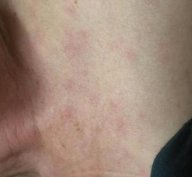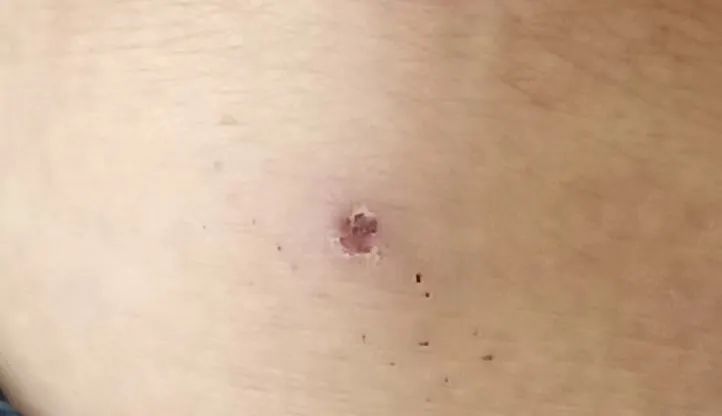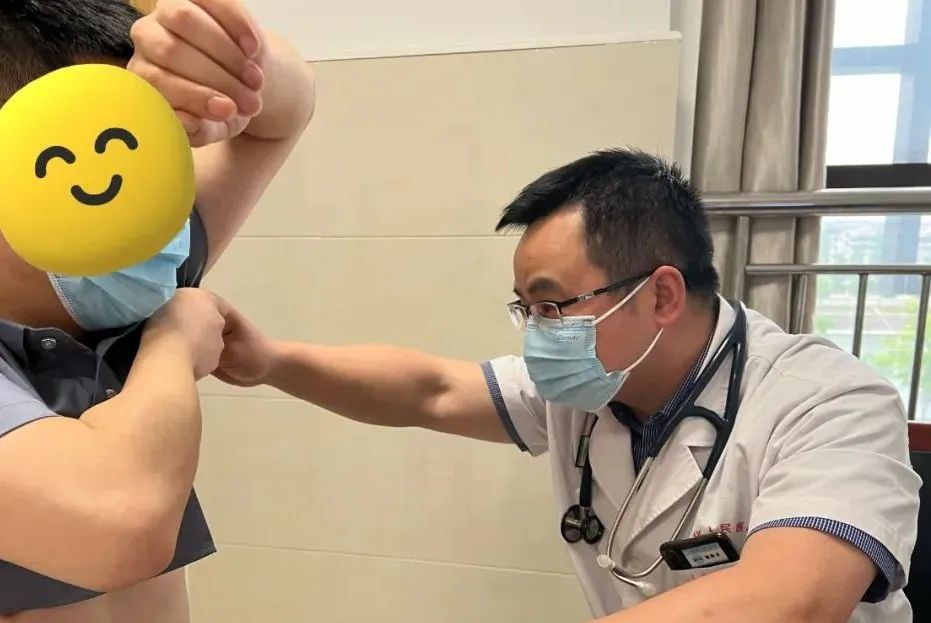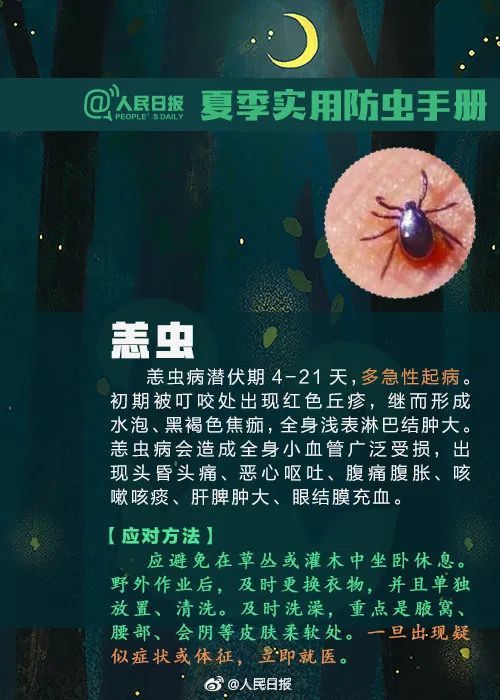May 9th “Healthy Hangzhou” official WeChat release reminder▼

From spring to summer, it is gradually entering the season of high incidence of scrub typhus. This is a “wild killer” and it is easy to be misdiagnosed or missed in a cold coat, which can be fatal! If citizens and friends go to the wild, please pay attention to protection. Recently, some people in Hangzhou have been recruited
The fever was 40℃ after returning from the wild,
I thought it was just a common cold
April is the season when tea farmers are busy picking tea leaves. Hangzhou Tonglu Wang Aunt (pseudonym) has been picking tea leaves in the mountains during that time, and was bitten by an unknown bug. At that time, she was not at ease. “For people like us who often work in the fields, encountering insects is also a common thing.” Aunt Wang said that at first, she was a little afraid of cold and heat, and her body was sore and weak. At that time, she thought it was a common cold and did not go to the hospital in time. Later, papules appeared on Aunt Wang’s neck, armpits and legs, and she had repeated fever, with a temperature of up to 40 degrees Celsius, accompanied by headache, chills, fatigue and other symptoms.


She came to the fever clinic of Tonglu County Traditional Chinese Medicine Hospital. Chen Xinjun, director of the infectious disease department, found that the scorched black rash on her legs was “eschar” unique to “tsutsugamushi”, so she considered a diagnosis of “tsutsugamushi.” After the patient was admitted to the hospital, the doctor decisively took effective antibacterial drugs to block the spread of germs and balance electrolytes in the body. At the same time, taking advantage of the characteristics of traditional Chinese medicine in the hospital, the decoction of heat-clearing and detoxification is given in a two-pronged approach, the patient’s body temperature is effectively controlled, and the symptoms are relieved in time.
Have eschar on you? It turns out that the tsutsugamushi are at fault!
“Tomorrow, a patient named Lao Xia (pseudonym) will be transferred to the General Hospital. He has a lot of rubella spots on his limbs and body. It has been several days. Please, Director Zheng, to check what the disease is.”

Recently, in a large internal medicine WeChat group led by Zheng Weidong, director of the Department of Internal Medicine of the Fourth People’s Hospital of Lin’an District, Hangzhou, rural physician Xu Yongfeng posted such a message for help. It turned out that after Lao Xia, a villager in Linkeng Village, Longgang Town, Lin’an District, went to the local village clinic for treatment, Dr. Xu Yongfeng couldn’t understand Lao Xia’s condition, so he referred him to the general hospital for treatment.

After careful medical history and physical examination, Zheng Weidong found that the patient had a history of tick bites more than 10 days ago, and recently developed symptoms such as fever, body aches, and eschars in the lower abdomen. He was initially diagnosed as scrub typhus. Standardized treatment.
When these symptoms appear, be careful of tsutsugamushi infection

tsutsugamushi
Clinical manifestations are diverse and complex, with many complications, often leading to multiple organ damage. The onset of this disease is acute, similar to other infectious diseases, and it is easy to be misdiagnosed. Most patients can recover well if they seek medical treatment and treatment in time, but if there is no targeted treatment, severe cases can be life-threatening due to cardiopulmonary and renal failure.
✦
What happens to a tsutsugamushi infection? Patients usually have: Fever: The body temperature is mostly between 38.5 and 41°C, with a maximum of 42°C, showing relaxation or retention fever, with chills and occasional chills. Eschar or ulcer: It is a unique sign of scrub typhus, and the incidence rate is more than 50%. Eschar or ulcer can be distributed all over the body, but it is more common in hidden, moist and strong-smelling parts such as the armpit, groin, external genitalia, and anus. Rash: The incidence of rash is quite different, which may be related to factors such as different types of pathogens, severity of the disease, and the morning and evening of medical treatment. It usually occurs 3 to 6 days after the onset of the disease, and congestive maculopapular rash is more common, which gradually subsides after 3 to 7 days. The rash was dark red and faded with pressure. The shape and size vary, generally 3 to 5 mm, and are scattered in a scattered distribution, with more on the chest, back and abdomen, developing to the limbs, few on the face, and no rash on the palms and soles. Swollen lymph nodes: Swollen superficial lymph nodes are one of the common signs of scrub typhus, and the superficial lymph nodes adjacent to eschar or ulcer are more obvious. Other manifestations: general malaise, dizziness, headache, muscle pain, nausea and vomiting, abdominal pain and bloating, anorexia, etc., may have cough and expectoration, hepatosplenomegaly, conjunctival congestion. Complications: bronchopneumonia, encephalitis or meningitis, otitis media, mumps, thrombophlebitis, liver and kidney dysfunction, myocarditis, cardiac insufficiency, DIC, septic shock, etc.
3 ways to teach you prevention
Protection when playing in the wild
Eliminate the source of infection
The main measure is to eliminate rodents.
Cut off the transmission route
Improve environmental sanitation, eliminate weeds, and eliminate tsutsugamushi breeding grounds. During field operations, the area can be sprayed with insecticides to reduce tsutsugamushi.
Personal protection
Avoid sitting, lying, or drying clothes on the grass when working in the field. During field activities, it is best to wear long-sleeved clothes, and tie the cuffs and trousers tightly to avoid exposing the skin to the grass, or rub repellent on the exposed skin to prevent the bite of tsutsugamushi.
Not a cold! If bitten, seek medical attention immediately
In recent years, there have been frequent cases of tsutsugamushi bites. Therefore, the doctor brings the following reminders to the general public:
“Because the site where the tsutsugamushi bites is generally hidden and there is no discomfort such as itching, many people are still fully recovered after being bitten.Of course I don’t know. After being bitten, do not remove the tsutsugamushi by yourself! Doing so is likely to leave the barbs of the tsutsugamushi under the skin and cause other discomfort. “
The first symptom of scrub typhus is high fever, which is easily treated as a cold. If you have been to the grass and find yourself with repeated fever, fatigue, headache, dizziness, etc., you should be alert to whether you have been bitten by tsutsugamushi. You can check your body for eschar that is unique to tsutsugamushi, so as not to delay treatment. “
During the epidemic, if you have chills and fever, body soreness, and conscious fatigue, you must seek medical treatment in time to avoid delays in the disease. If you have shock symptoms, please call the 120 emergency number in time for help!
(Qianjiang Evening News All Media Editing Center Comprehensive)